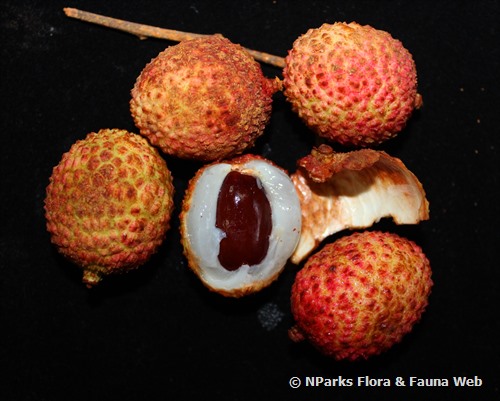
Back
Litchi chinensis Sonn.
| Family Name: | Sapindaceae |
| Common Name: | Lychee, Litchee, Litchi, 荔枝 |
Litchi chinensis, commonly known as Lychee, is a tree which can reach up to 35 m in the wild. It is prized for its fruit which ripens to a vibrant red and is covered with smooth or scaly warts. The seed is surrounded with a juicy sweet-tasting pulp.
Name
Classifications and Characteristics
| Plant Division | Angiosperms (Flowering Seed Plants) (Dicotyledon) |
|---|---|
| Plant Growth Form | Tree |
| Lifespan (in Singapore) | Perennial |
| Mode of Nutrition | Autotrophic |
| Maximum Height | 35 m |
Biogeography
| Native Distribution | Southern China |
|---|---|
| Native Habitat | Terrestrial |
| Preferred Climate Zone | Sub-Tropical / Monsoonal |
| Local Conservation Status | Non-native (Horticultural / Cultivated Only) |
Description and Ethnobotany
| Growth Form | A tree that grows up to 10 m tall under cultivation, and 35 m in the wild. |
|---|---|
| Foliage | The compound leaves have 2-4 pairs of leaflets. The leaflets are elliptic-oblong to lanceolate, measuring 6-15 cm long. |
| Flowers | Flowers are borne in branched clusters. The individual flowers are white and small. |
| Fruit | Fruits are round to heart-shaped, 2-4 cm long. The ripe fruit has a thin and rough skin, varying from green to red depending on the cultivar. The single seed is enclosed in the half-translucent pulp. |
| Ethnobotanical Uses | Edible Plant Parts : Edible Fruits Food (Fruit or Vegetable): The fruit pulp is aromatic and edible. Lychee can be consumed fresh or dried. The dried fruit can be used in desserts. The dried lychees along with the dried longans wraped in brown paper is used to be a popular food gift in China. Cultural / Religious: Heritage Tree : There is one tree of Litchi chinensis listed as Heritage Tree in Singapore. It can be found at Mount Rosie Road. To find out more about these trees, please visit the Heritage Tree Register. |
Landscaping Features
| Desirable Plant Features | Ornamental Fruits |
|---|---|
| Landscape Uses | Parks & Gardens |
Fauna, Pollination and Dispersal
| Pollination Method(s) | Biotic (Fauna) |
|---|
Plant Care and Propagation
| Light Preference | Full Sun |
|---|---|
| Water Preference | Moderate Water |
| Plant Growth Rate | Moderate |
| Rootzone Tolerance | Well-Drained Soils, Fertile Loamy Soils |
| Propagation Method | Seed, Grafting |
Foliar
| Foliage Retention | Evergreen |
|---|---|
| Mature Foliage Colour(s) | Green |
Floral (Angiosperm)
| Flower Colour(s) | Cream / Off-White |
|---|---|
| Flower Grouping | Cluster / Inflorescence |
Fruit, Seed and Spore
| Mature Fruit Colour(s) | Brown, Green, Pink, Red |
|---|---|
| Mature Fruit Texture(s) | Rough |
| Mature Seed Colour(s) | Black, Brown |
| Mature Seed Texture(s) | Smooth |
| Seed Quantity Per Fruit | Few (1-5) |
Image Repository
Others
| Master ID | 1998 |
|---|---|
| Species ID | 3290 |
| Flora Disclaimer | The information in this website has been compiled from reliable sources, such as reference works on medicinal plants. It is not a substitute for medical advice or treatment and NParks does not purport to provide any medical advice. Readers should always consult his/her physician before using or consuming a plant for medicinal purposes. |

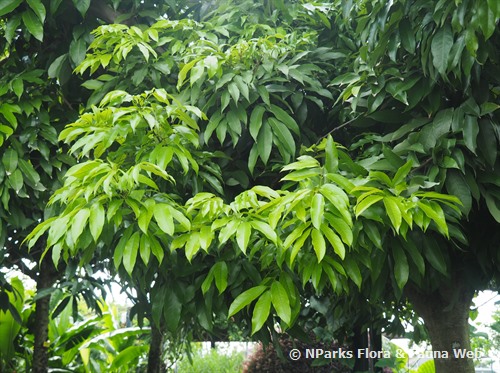
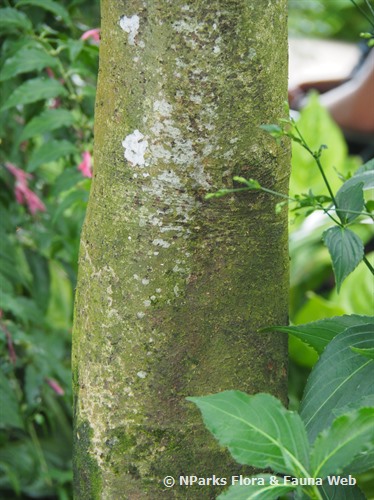
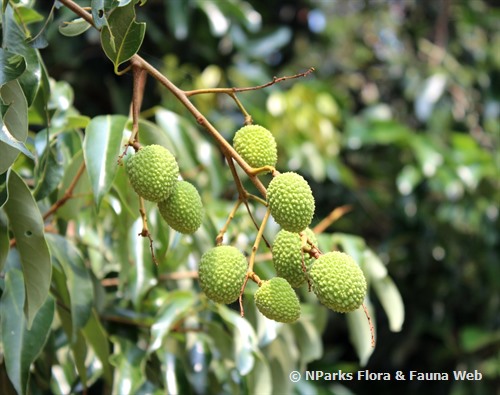
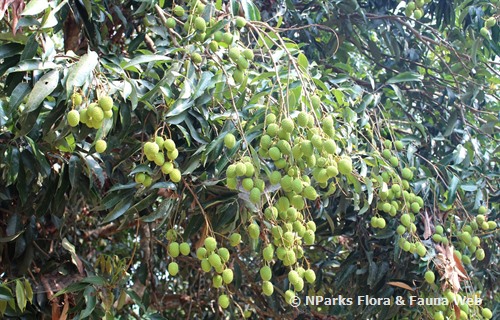
.jpg)